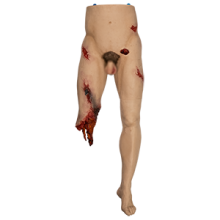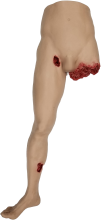Lower Body Simulators
Lower body simulators are advanced training tools designed to provide realistic and comprehensive education for medical professionals. These simulators replicate the anatomy and physiological functions of the lower extremities, including muscles, bones, joints, and vascular structures. They are used extensively in medical and nursing schools to enhance the practical skills of students, allowing them to practice procedures such as injections, suturing, and emergency interventions in a controlled and safe environment. By simulating real-life scenarios, these tools help trainees build confidence and competence, reducing the likelihood of errors in actual clinical settings.
One of the key features of lower body simulators is their ability to mimic various pathologies and conditions, from fractures and dislocations to vascular diseases and soft tissue injuries. This versatility enables educators to create diverse training modules that cater to different learning needs and specialties. For instance, students can practice orthopedic procedures like setting fractures and performing joint aspirations, or they can focus on vascular access techniques such as placing catheters or performing arterial punctures. The detailed anatomical accuracy and functional realism of these simulators ensure that learners gain a thorough understanding of both normal and pathological conditions of the lower extremities.
Moreover, the use of lower body simulators supports the shift towards more hands-on, experiential learning in medical education. By integrating these simulators into their curricula, educational institutions can provide students with ample opportunities to practice and refine their skills before encountering real patients. This not only enhances the quality of training but also improves patient outcomes by ensuring that future healthcare providers are well-prepared and proficient in essential clinical procedures. The ongoing development and innovation in simulation technology continue to push the boundaries of medical training, making it possible to achieve higher levels of precision and effectiveness in education and practice.
-
Item Number:TFX-CRL-1Experience unparalleled realism with TacMed Solutions' Clinical Response Lower (CRL) trauma trainer. This high-fidelity, remote-controlled simulator provides authentic simulations for hemostatic wound training, tourniquet application, and more. Perfect for POI, Secondary Care, and Prolonged Field Care training.
-
Item Number:TFX-C-HCSTThe TacMed Simulation Hemorrhage Control Skills Trainer - Classroom (HCST-C) is a medical intervention simulator designed to teach fundamental skills for tourniquet application and hemostatic wound packing.





